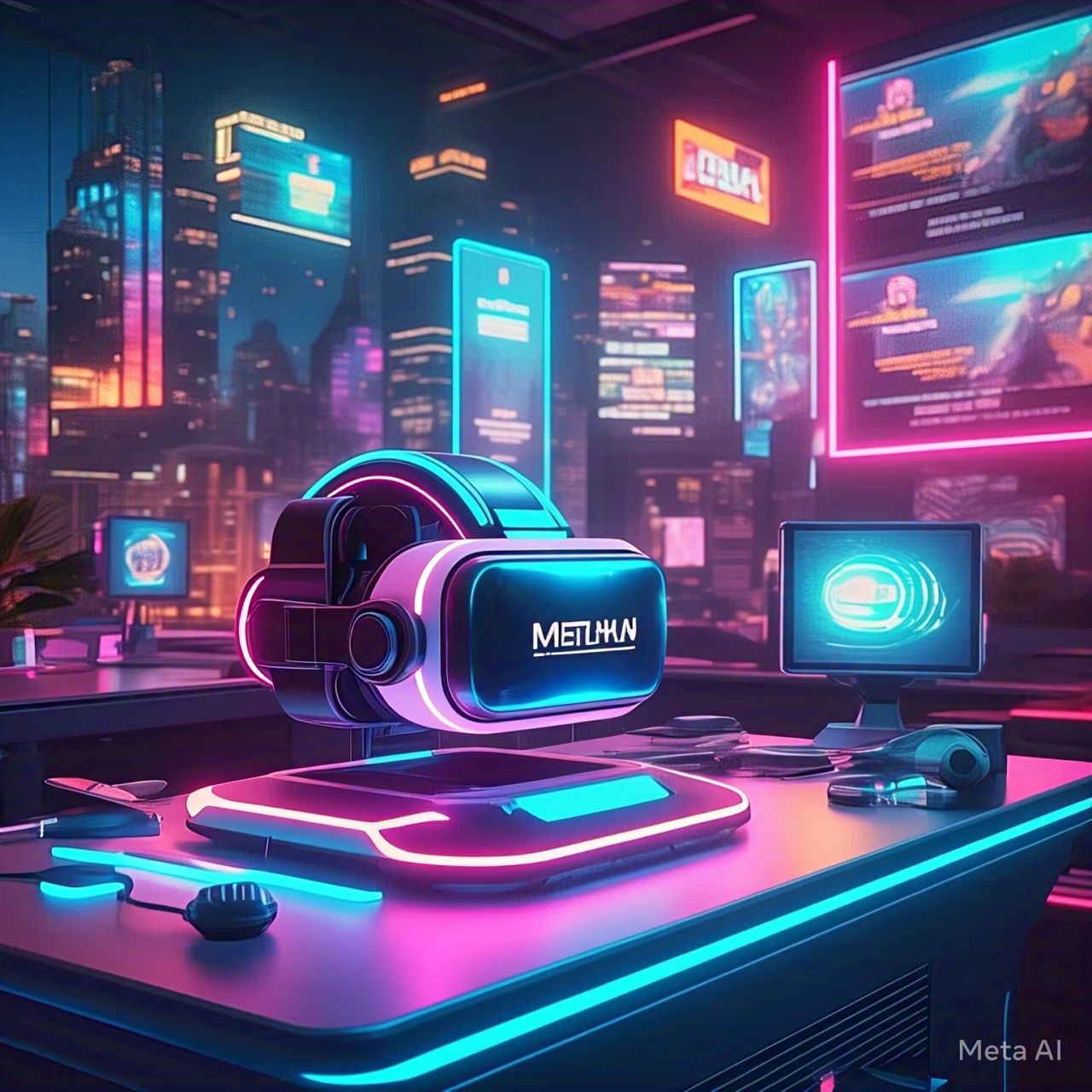The concept of the metaverse has transitioned from science fiction to reality, creating a new digital landscape where businesses and consumers interact in immersive virtual environments. As technology advances, the metaverse is becoming a key marketing frontier, offering brands innovative ways to engage with audiences.
Metaverse marketing involves leveraging virtual reality (VR), augmented reality (AR), blockchain technology, and social networking to create unique brand experiences. With companies like Meta (formerly Facebook), Microsoft, and Google heavily investing in this space, businesses must adapt and explore branding opportunities in virtual worlds.
This article delves into the evolution of metaverse marketing, key branding strategies, challenges, and the future of digital marketing in virtual environments.
Understanding the Metaverse
The metaverse is a collective virtual space where users interact with digital environments, virtual goods, and other users in real-time. It consists of interconnected virtual worlds powered by:
- Virtual Reality (VR): Fully immersive digital environments where users interact through VR headsets.
- Augmented Reality (AR): Digital overlays that enhance the physical world with interactive elements.
- Blockchain Technology: Enables ownership of virtual assets, digital currencies, and NFTs (non-fungible tokens).
- Artificial Intelligence (AI): Enhances user experiences with smart avatars, chatbots, and personalized content.
- Social Networking: Platforms that integrate digital communities, live interactions, and shared experiences.
The Rise of Metaverse Marketing
Marketing in the metaverse goes beyond traditional digital advertising, offering brands a dynamic way to engage consumers. Several key developments have fueled the rise of metaverse marketing:
- Increased Digital Engagement: Consumers spend more time in virtual spaces, creating opportunities for brands to connect with audiences.
- Virtual Real Estate & Events: Companies are buying virtual land, hosting digital events, and setting up immersive brand experiences.
- NFT Integration: Brands use NFTs for unique digital collectibles, loyalty programs, and virtual ownership.
- E-commerce in Virtual Worlds: The ability to shop in the metaverse using digital currencies and blockchain-secured transactions.
Key Metaverse Marketing Strategies
1. Virtual Storefronts & Showrooms
Brands can create digital storefronts within virtual worlds, allowing users to explore products in a 3D environment before making purchases. Companies like Nike and Gucci have already built virtual stores in platforms like Decentraland and Roblox.
Example:
- Nike’s Nikeland on Roblox enables users to dress their avatars in Nike gear and participate in branded challenges.
- Gucci Garden allowed users to explore digital fashion pieces and buy virtual collectibles.
2. Immersive Advertising & Product Placement
Instead of traditional ads, brands can integrate marketing seamlessly within virtual spaces. Product placement in virtual concerts, gaming environments, and social spaces allows for organic brand exposure.
Example:
- Coca-Cola’s NFT collectibles offered limited-edition virtual assets to engage digital audiences.
- Balenciaga’s collaboration with Fortnite featured in-game fashion pieces, blurring the line between virtual and real-world branding.
3. Virtual Influencer & AI-Generated Avatars
AI-powered virtual influencers are becoming a major part of brand marketing. Companies create digital personas that interact with consumers, promote products, and represent brand identities in virtual worlds.
Example:
- Lil Miquela, a virtual influencer, collaborates with major fashion brands like Prada and Chanel.
- Samsung’s AI-generated avatars provide customer service in virtual environments.
4. Hosting Events & Virtual Experiences
Brands can create immersive experiences through virtual concerts, product launches, and interactive events. These experiences generate buzz and drive engagement within digital communities.
Example:
- Travis Scott’s virtual concert in Fortnite attracted over 12 million players, creating a new marketing avenue for music and merchandise.
- BMW’s virtual car showroom in VR spaces allows customers to experience vehicles digitally.
5. NFT & Digital Collectibles
Non-fungible tokens (NFTs) provide unique opportunities for branding. Companies can create digital art, limited-edition items, and loyalty rewards through NFTs, offering customers exclusive digital ownership.
Example:
- Adidas’ NFT collection allowed customers to own virtual fashion assets.
- McDonald’s released McRib NFTs as a promotional digital campaign.
6. Gamification & Play-to-Earn Models
Gamified marketing strategies keep users engaged in branded virtual experiences. Companies integrate rewards, challenges, and loyalty programs into digital interactions.
Example:
- Louis Vuitton’s NFT-based game celebrates the brand’s heritage while engaging younger audiences.
- AXIE Infinity’s Play-to-Earn model offers digital rewards and branded partnerships.
Challenges of Metaverse Marketing
Despite its potential, metaverse marketing presents several challenges:
1. High Entry Costs
Developing VR experiences, buying virtual real estate, and integrating blockchain solutions require significant investment, making it difficult for smaller businesses to enter the space.
2. Privacy & Data Security
User data protection in virtual worlds is a growing concern. Brands must navigate data privacy regulations and cybersecurity challenges.
3. Adoption & Accessibility
Not all consumers have access to VR headsets or high-end devices, limiting brand reach. Companies must consider hybrid marketing strategies that integrate traditional and virtual experiences.
4. Platform Fragmentation
The metaverse is still evolving, with multiple competing platforms like Decentraland, The Sandbox, Horizon Worlds, and Roblox. Choosing the right platform for marketing campaigns can be complex.
5. Consumer Skepticism
Many consumers are still unfamiliar with the metaverse and hesitant to engage with digital assets like NFTs. Brands must educate audiences and build trust.
The Future of Branding in the Metaverse
As the metaverse continues to expand, businesses must adapt their marketing strategies to stay competitive. Future trends include:
- Hyper-Personalization: AI-driven marketing will tailor virtual experiences to individual user preferences.
- VR & AR Integration: Enhanced AR shopping experiences will blend real and virtual interactions.
- Blockchain-Based Loyalty Programs: Companies will use blockchain for transparent reward systems and customer incentives.
- Metaverse Shopping Malls: Digital malls featuring multiple brand stores will redefine online shopping.
- Cross-Metaverse Interoperability: Brands will create assets that work across multiple virtual worlds.
Conclusion
Metaverse marketing is not just a trend; it’s a paradigm shift in digital branding. Companies that embrace virtual worlds will gain a competitive edge, connecting with consumers in new and innovative ways. While challenges exist, the potential for immersive brand engagement, gamified experiences, and digital ownership is vast.
Businesses that strategically invest in metaverse marketing today will shape the future of brand interactions in a digital-first world. Whether through virtual storefronts, NFTs, gamification, or influencer collaborations, brands must innovate to stay relevant in the evolving virtual economy.
The question isn’t whether brands should enter the metaverse—it’s how they can leverage it effectively for long-term success.







